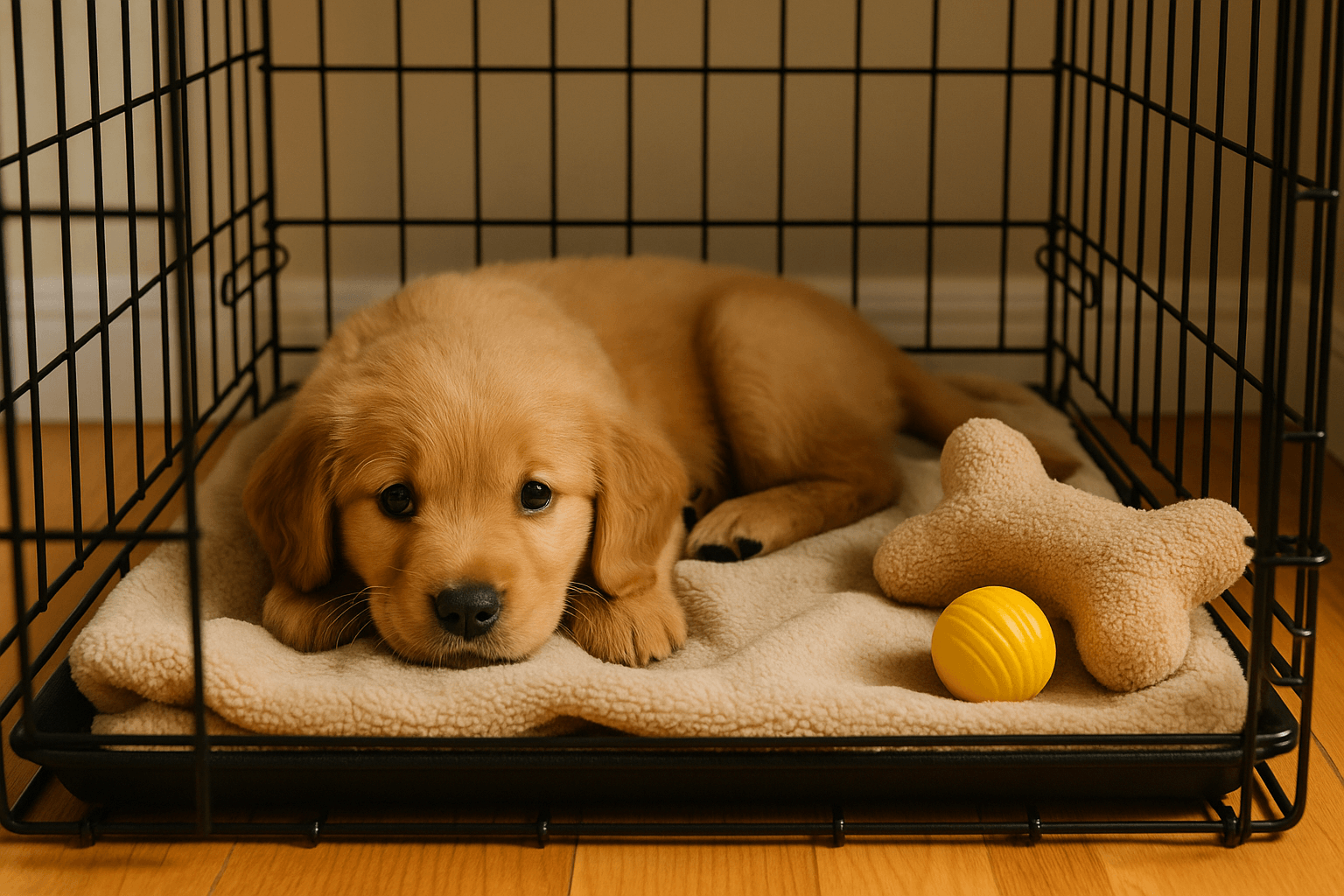How to Crate Train a Puppy: The Ultimate Step-by-Step Guide
Crate training is one of the most effective tools for raising a well-adjusted puppy. Not only does it help with house training and creating boundaries, but it also gives your dog a secure space they can call their own. When done right, crate training can reduce anxiety, promote healthy routines, and make life easier for both of you.
In this guide, we’ll walk you through everything you need to know to crate train your puppy the right way—step by step.
Why Crate Training Matters
Before diving into the process, it’s important to understand why crate training is so beneficial:
- House Training: Crates teach bladder control and reduce accidents.
- Safety and Security: Keeps your puppy safe when you’re not around to supervise.
- Anxiety Reduction: A familiar crate can become a calming, den-like retreat.
- Travel Preparation: Crate-trained dogs adjust better to car rides and vet visits.
Step 1: Choose the Right Crate
Selecting the right crate is your first important decision. The crate should be:
- Large enough for your puppy to stand, turn around, and lie down comfortably.
- Not too big, or they may use part of it as a bathroom.
- Well-ventilated and secure—wire crates are ideal for airflow, while plastic crates offer a more enclosed feel.
Tip: For growing puppies, use a crate with a divider panel so you can adjust the space as they grow.
Step 2: Introduce the Crate Positively
Set the crate up in a high-traffic room where your puppy can feel included. Leave the door open and allow them to explore it freely.
- Place a soft blanket or bed inside.
- Add a few toys or treats to encourage curiosity.
- Use positive reinforcement when they show interest.
Tip: Never force your puppy into the crate. Let them explore at their own pace to build a positive association.
Step 3: Make the Crate Fun
To reinforce the idea that the crate is a good place, try these strategies:
- Feed meals in the crate so they associate it with something enjoyable.
- Use treat-dispensing toys inside the crate during short sessions.
- Praise and reward whenever they go in voluntarily.
Tip: Begin with short time periods and gradually increase how long they stay in the crate.
Step 4: Establish a Routine
Consistency is key when crate training. Break up crate time between day and night:
Daytime:
- Start with 5–10 minutes of crate time while you’re in the room.
- Gradually increase the duration while staying close by.
Nighttime:
- Keep the crate in your bedroom to start.
- Let your puppy out for bathroom breaks during the night—they typically need to go every 2–3 hours.
Tip: Puppies under 12 weeks shouldn’t be expected to hold their bladder overnight—set realistic expectations!
Step 5: Handling Whining and Barking
It’s normal for puppies to protest at first, but it’s important to handle it calmly and correctly:
- Ignore minor whining—don’t reinforce the behavior by letting them out immediately.
- Check for actual needs like potty time, especially if they’ve been crated a while.
- Respond calmly without making a big fuss.
Tip: If the whining lasts more than 10–15 minutes, take them out for a quick potty break—but keep interaction minimal.
Step 6: Gradually Increase Crate Time
Once your puppy is comfortable in the crate:
- Start leaving the room for short periods while they’re inside.
- Build up to longer intervals.
- Make sure they have enough playtime, exercise, and potty breaks.
Tip: Use a consistent command like “Crate time!” to help them associate the cue with entering their crate.
Step 7: Transition to Long-Term Use
When your puppy can remain calm in the crate for extended periods, you can begin using it when leaving the house:
- Leave quietly and return calmly to prevent separation anxiety.
- Continue to use the crate positively—never as punishment.
- Ensure they’re tired and have had potty time before crating.
Common Mistakes to Avoid
Avoid these pitfalls to ensure successful crate training:
- ❌ Using the crate as punishment – It should always be a safe space.
- ❌ Crating too long – Puppies need exercise and human interaction.
- ❌ Letting them out when they whine – This reinforces unwanted behavior.
- ❌ Skipping mental and physical play – A tired puppy is more likely to settle in their crate.
Final Thoughts
Crate training isn’t just about housebreaking—it’s about building trust and creating routines that make life better for both you and your puppy. With patience, positive reinforcement, and consistency, your puppy will learn to love their crate as a comforting and secure space.
